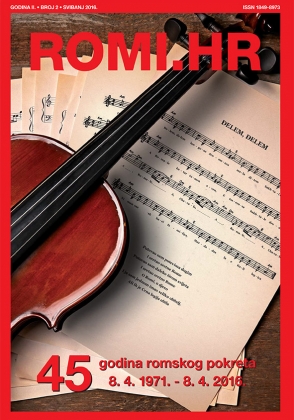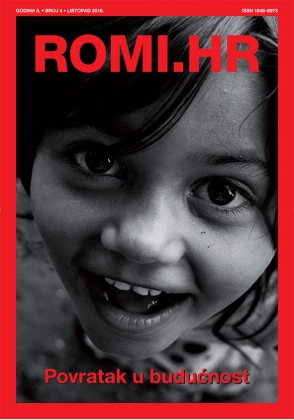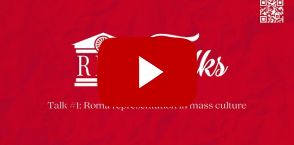Vijesti ROMI.HR
/
Povodom europskog dana borbe protiv trgovine ljudima, glavna tajnica Vijeća Europe, Marija Pejčinović Burić izjavila je: “Ljudi koji trguju drugim ljudima svoje žrtve podvrgavaju najstrašnijim oblicima eksploatacije i zlostavljanja. Trgovci ljudima moraju biti progonjeni i kažnjavani, ali pravda mora biti ostvarena i prema žrtvama – tako što će dobiti odštetu, biti zaštićeni od ponovne prodaje u roblje, kao i pružanjem pomoći da se vrate svojim životima”.
Vijeće Europe je 2005. godine predložilo Konvenciju o djelovanju protiv trgovine ljudima. To je bio prvi međunarodni ugovor koji je zahtijevao od država da žrtvama osiguraju naknadu štete koju su pretrpjele. Konvenciju je do sada ratificiralo 46 od ukupno 47 zemalja članica Vijeća Europe – sve osim Ruske Federacije.
Trgovina ljudima je težak zločini i grubo kršenje ljudskih prava, što se prema Europskoj komisiji može klasificirati kao “moderni oblik ropstva”. Ujedinjeni narodi smatraju trgovinu ljudima drugim najvećim izvorom nezakonite financijske dobiti, odmah nakon trgovine drogom.
Ali što je zapravo trgovina ljudima i kako se ona događa? Ukratko, trgovci iskorištavaju ranjive ljudi radi financijske dobiti koristeći se prevarama ili ih primoravajući uglavnom na: prostituciju/seksualno iskorištavanje u 79% slučajeva i prisilni rad u 18% slučajeva prema procjenama Ureda Ujedinjenih naroda za droge i zločin iz 2010. godine. Drugi oblici eksploatacije, iako ne toliko česti, uključuju primoravanje žrtava na prosjačenje, kao i uklanjanje i prodaju njihovih organa. Žrtve obično “regrutiraju” njihovi poznanici, rođaci ili “poslodavci” koji obećavaju dobro plaćen posao u inostranstvu. Krijumčari kontroliraju svoje žrtve obmanama, prijetnjama i uporabom sile. Često se ovisnost o drogama koristi kao sredstvo za manipulaciju i prisilu.
Pored neadekvatnih zakona i politika u mnogim državama koji omogućavaju da se trgovci ljudima vrlo lako izvuku s počinjenim zločinom, postoje i drugi strukturalni uvjeti koji omogućavaju ogromne razmjere ovog modernog ropstva. Prema Europskoj komisiji, ključni uzrok trgovine ljudima je ranjivost žrtava. Zbog “siromaštva, marginaliziranosti, ekonomske isključenosti, oružanih sukoba, socijalnih i rodnih nejednakosti, diskriminacije nacionalnih manjina i kršenja prava djece” mnogi ljudi kako u Europi tako i širom svijeta izloženi su velikom riziku da postanu meta trgovaca ljudima. S druge strane imamo koncentraciju bogatstva u urbanim područjima i bogatijim zemljama, gdje se stvara najveća potražnja za prostitucijom i jeftinom radnom snagom.

Europski centar za prava Roma (ECRC) i organizacija Ljudi u potrebi (People in Need) objavili su 2011. godine izvještaj pod naslovom “Slomiti tišinu”. Na temelju sveobuhvatnog istraživanja međunarodnog tima stručnjaka, Izvješće pokazuje da su Romkinje i romska djeca u mnogim dijelovima Europe posebno ranjive na međunarodnu i unutarnju trgovinu ljudima.
Među ključnim nalazima istrage je i to što je jako malo Roma policija identificirala kao žrtve trgovine ljudima jer se mnogi nerado prijavljuju institucijama za provođenje zakona. To je zato što se žrtve boje progona zbog kršenja zakona i moguće osvete trgovaca ljudima. Uz to, veoma je mali broj romskih žrtava koje imaju pristup mjerama prevencije i zaštite žrtava, kao i adekvatnoj socijalnoj zaštiti. “Izostanak podrške romskim žrtvama trgovine ljudima negativno utiče na sposobnost uključivanja, ostavljajući ih vrlo ranjivim i izloženim nastavku trgovine ljudima”, zaključuje se u Izvješću.

A Modern Slavery – the Trafficking in Human Beings
On the eve of European Anti-trafficking Day, the Secretary General of the Council of Europe, Marija Pejčinović Burić, said: “People who trade in human beings subject their victims to the most horrendous forms of exploitation and abuse. Traffickers must be rigorously prosecuted and punished, but justice must also be done to the victims of trafficking – by making sure they receive compensation, they are protected from being trafficked again and they are given sufficient help to put their lives back together.”
In 2005, the Council of Europe launched a Convention on Action against Trafficking in Human Beings, which was the first international treaty to require states to make sure that victims are compensated for the damages they have suffered. The convention has so far been ratified by 46 of the 47 Council of Europe member states – all except the Russian Federation.
Trafficking in human beings is a grave crime and a blatant violation of human rights, which can be classified, according to the European Commission as “a modern form of slavery”. The United Nations considers human trafficking the second biggest source of illegal financial gains following those obtained from drug trade.
But what is trafficking in human beings exactly and how does it happen? To put it in a nutshell, traffickers exploit vulnerable people for financial gain, by tricking or forcing them into mainly: prostitution / sexual exploitation in 79% of cases and forced labour in 18% of cases according to 2010 estimates from the United Nations Office on Drugs and Crime. Other forms of exploitation, although not so common, include forcing victims to beg and removing and selling their organs. The victims are usually “recruited” by acquaintances of theirs, relatives, or “employers” promising well-payed job abroad. The traffickers control their victims through deception, threats and use of force. Oftentimes drug addiction is used as a tool for manipulation and coercion.
Along with the inadequate laws and policies in many countries, which make it very easy for traffickers to get away with the crimes committed, there are other structural conditions which enable the massive scale of this modern slavery. According to the European Commission, a key root cause of trafficking in human beings is the vulnerability of the victims. Due to “poverty, marginalisation, economic exclusion, armed conflicts, social and gender inequality, discrimination against ethnic minorities and infringements of children's rights” many people in Europe and around the globe are exposed to a great risk of becoming targets of traffickers. On the other side of the coin is the concentration of wealth in the urban areas and the richer countries, where most of the demand for prostitution and cheap labour is generated.
In 2011, a report entitled “Breaking the Silence” was published by the European Roma Rights Centre and the People in Need organisation. Based on a comprehensive research done by an international team of experts, the report shows that Romani women and children in a number of European counties are particularly vulnerable to international and internal trafficking.
Among the key findings of the inquiry is also that very few Roma are identified by police as trafficked persons and many are reluctant to report themselves to law enforcement institutions. That is so because the victims are afraid of both official prosecution for the law breaking they have been made to do and of possible revenge by the traffickers. Additionally, there is a very low number of Romani trafficked persons who have access to victim prevention and protection services, as well as to adequate social protection. “The overwhelming lack of support available to Romani trafficked persons negatively impacts the ability of many to re-integrate, leaving them highly vulnerable to re-trafficking”, the report concludes.













